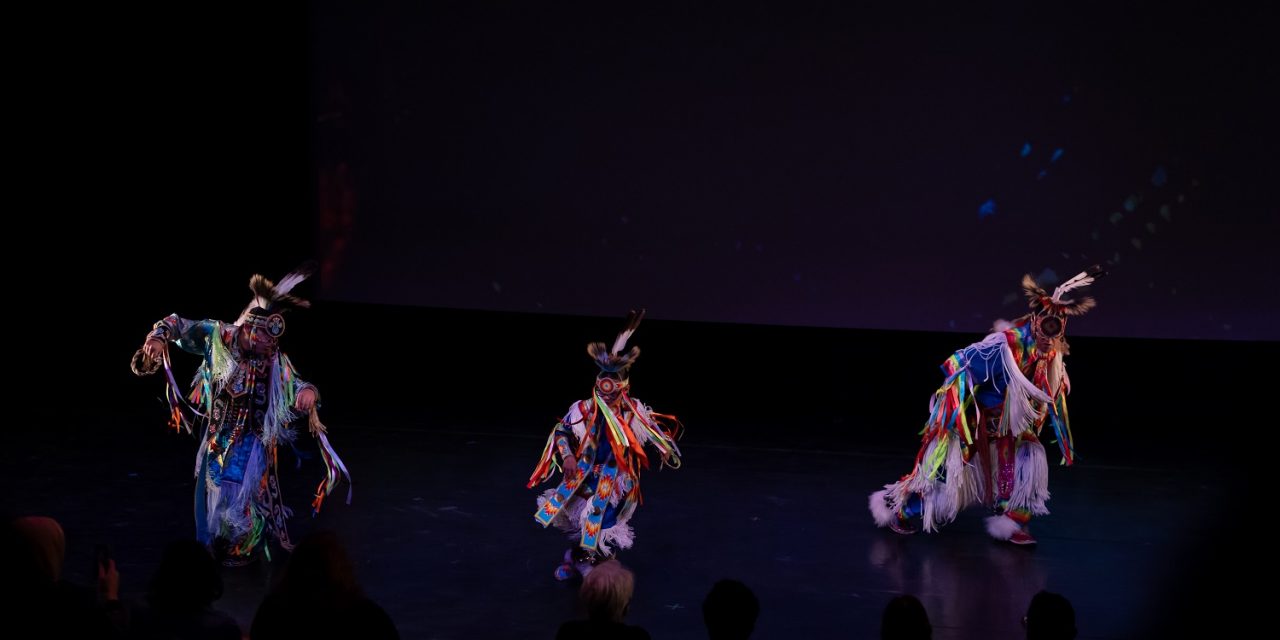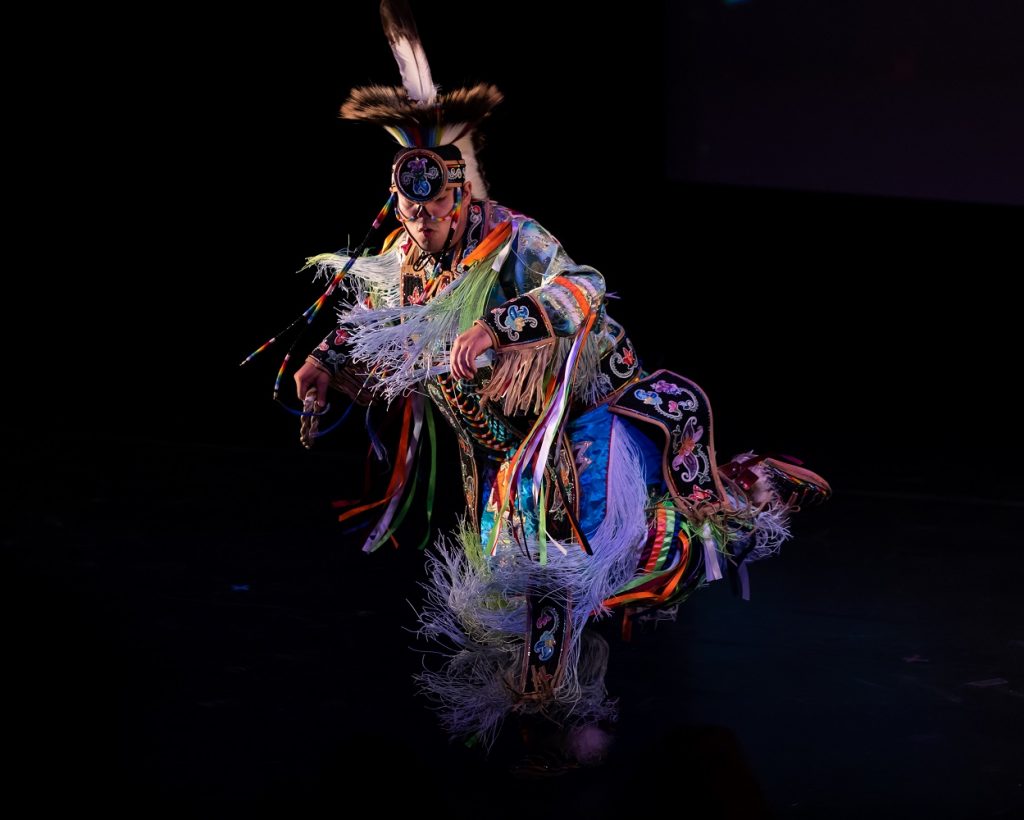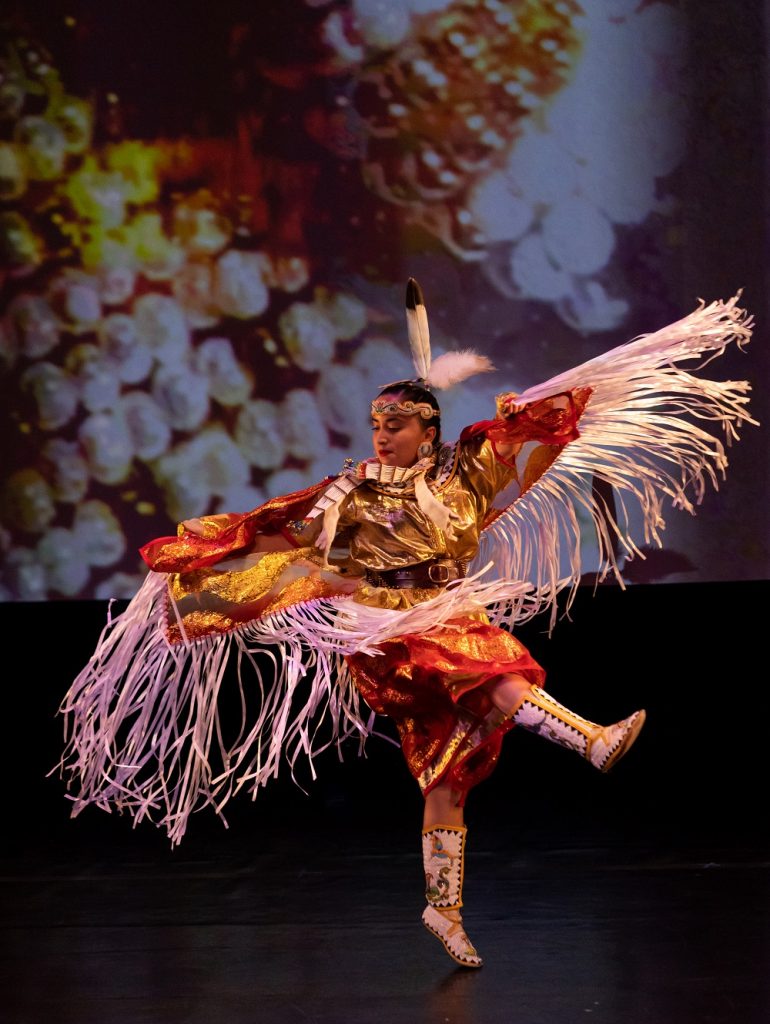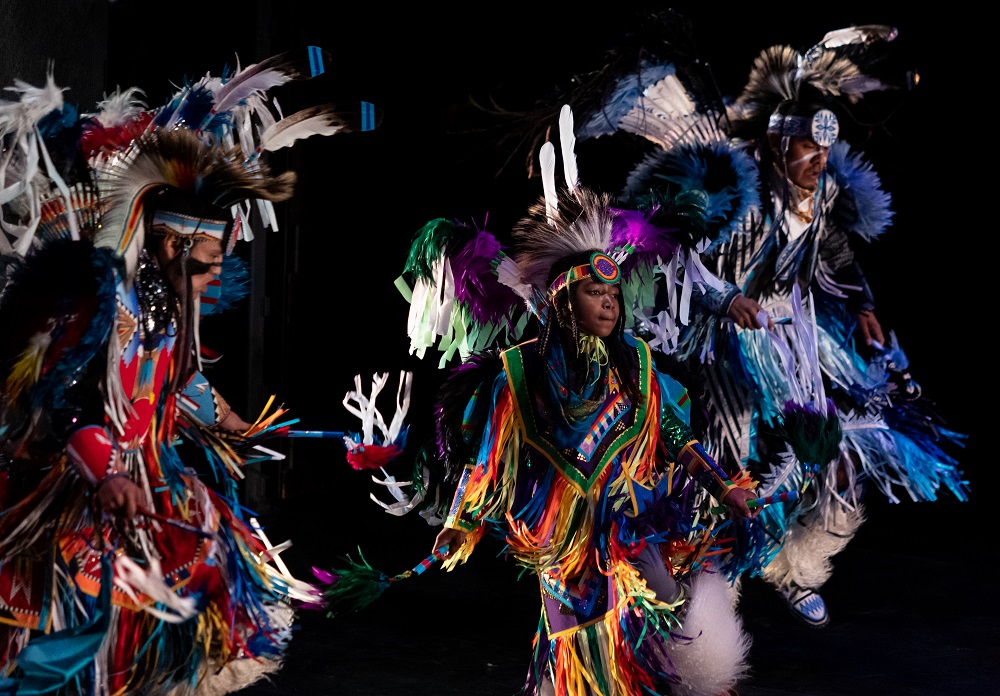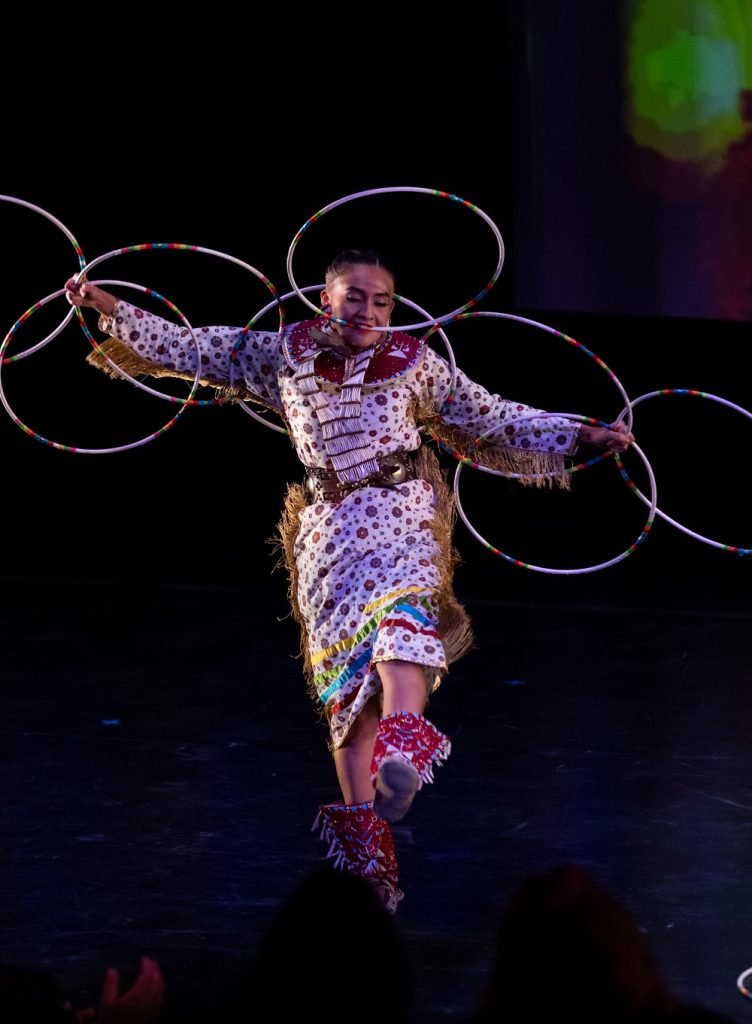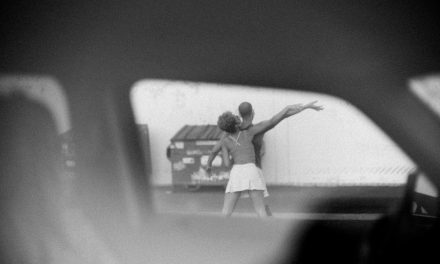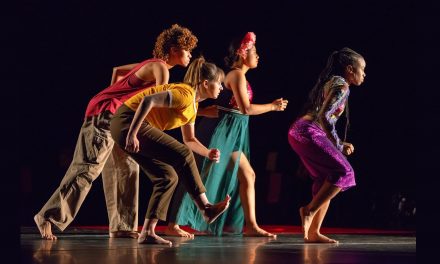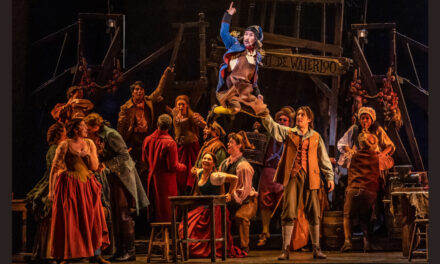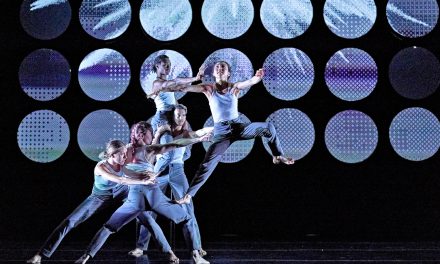This Saturday, March 19th, marked the Los Angeles debut of Indigenous Enterprise’s: Indigenous Liberation at the Roy and Edna Disney/CalArts Theater. REDCAT’s president, Ravi S. Rajan, gave an opening speech on the power and importance that indigenous representation means to not only our nation, but to the area of land of which the Theater sits on saying, “We gratefully acknowledge that we operate on the traditional lands of the Tongva, Tataviam, and Chumash peoples…we honor their ancestors past, present, and future, and recognize their continued existence and contributions to our society.” As part of CalArts Cooperative I.D.E.A (Inclusivity, Diversity, Equity, and Access) the Theatre has been able to fund “efforts to confront, address and eradicate the structural, systemic, and societal injustice that are threaded through our communities.” Indigenous Enterprise’s commitment, along with that of REDCAT’s IDEA co-op, to the support of diversity through access and inclusive practices is something I wish more institutions would take a serious look at. The performance was not just a performance with steps, costumes, and music, it was a healing process from the inside out. The greatest gift is knowledge, and with so little information about the Native American culture walking in, I left with a history and understanding of why it is so important to keep the traditions of our ancestors alive.
Indigenous Enterprise took us through the origin songs, stories, and dances from the Americas, or “Turtle Island” as it is referred to in their native tongue. We saw traditional pow wow categories such as Men’s Fancy War Dance to lesser known dances like the Grass dance originating from the Ojibwa. Before each story, the lights went down and we were shown an original animation on a screen backdrop upstage of how the dances came to be, and why we still do the steps today. The Chicken Dance, for example, originated from the prairie chicken’s mating dance in the springtime. The legend says that a young Blackfoot walking for days at a time was looking for food when he spotted a chicken in the tall grass. He pulled out an arrow and shot the bird dead, taking it home to his family for food and nourishment. That night, the young man was visited by the spirit of the bird who asked, “Why did you kill me?” The Blackfoot replied, “I was hungry and needed food for my family” and the bird asked the man to learn his dance step by step and to teach it to the other members of the tribe, or else he would come back and kill him…and so he did. The dancer, Tyrenn Lodgepole, wore a head roach, breechcloth, lots of round bells, and a small feather bustle in the back. He mimicked the pecking quality of a chicken, including using his own hands as the feathered wings, and even whipping out a small mirror he carried in which to glance at his reflection.
The Jingle Dress Dance, performed by Acosia Redelk and Tia Wood, had a beautiful origin story of prayer and the healing powers of women. The granddaughter of an Ojibwa medicine man grew faint and ill, and nothing it seemed could be done to cure her. That night in a dream, a spirit came to him with the sound and shape of a bell and a dress that should be worn. He gathered the women of the tribe and asked them to bring this vision to life. As the women of the tribe performed the light footwork, the granddaughter was brought to the center of the circle, so she could better hear the healing bells sewn onto the women’s garments. Her curiosity sparked awareness, and she stood up and began learning the steps, and soon after was healed and cured of her sickness. Wood and Redelk’s feet never crossed one another, or their own, and they never completed a circle, but always remained forward. Their eyes would move along with their spine, with the occasional glance up towards the sky. The bells, or ziibaaska’iganan, hit one another mimicking the sound of rain as the women bounced on their toes, remaining light and in time with the drum. Forming a zig-zag pattern, the choreography represents the zig-zag of life and is meant to represent one’s journey of uncertainty and fleeting moments. The women kept their hands placed neatly on their hips, while also lifting a feathered fan into the air; a gesture to receive the healing from the air above.
Although we saw many other dances and heard many other stories, I was especially moved by the sense of community each dancer and performance brought to the space, as we were joined by friends and family of Indigenous Enterprises. Especially during “Fancy Dance” for both the women and the men, audience members regaled in sounds of encouragement and celebration through yelping sounds of EYY-EEE! Along with the deep rhythm of the drum, and the fleeting tunes of the flute, performed by Adrian Thomas, I felt as though I was being called to ancient lands I had too soon forgotten. The songs and steps hit your soul deep down in a space of purity, where there is no right, no wrong, no language, no rules, only clarity and peace. You can almost smell the smoke of a campfire nearby and feel the cold soil beneath your feet. Having never seen this type of dance before, I felt strangely at home, and welcomed in this space of fascination and newness. Everything about Indigenous Enterprise’s performance brought me to a place within myself that was hurting, lonely, or pushed aside and I was given strength and promise and most importantly…the space to cast good energy into the ether, a space to just be. It’s very rare to be witnessed as yourself just as you are, while still performing acts of ceremony for betterment. It was an incredible evening, and I felt honored to have experienced the liberation of these traditional pow wows.
#####
To learn more about Indigenous Enterprise, please visit their website.
To learn more about REDCAT, please visit their website.
Written by Grace Courvoisier for LA Dance Chronicle.
Featured image: Indigenous Enterprise: Indigenous Liberation – Photo by Angel Origgi

